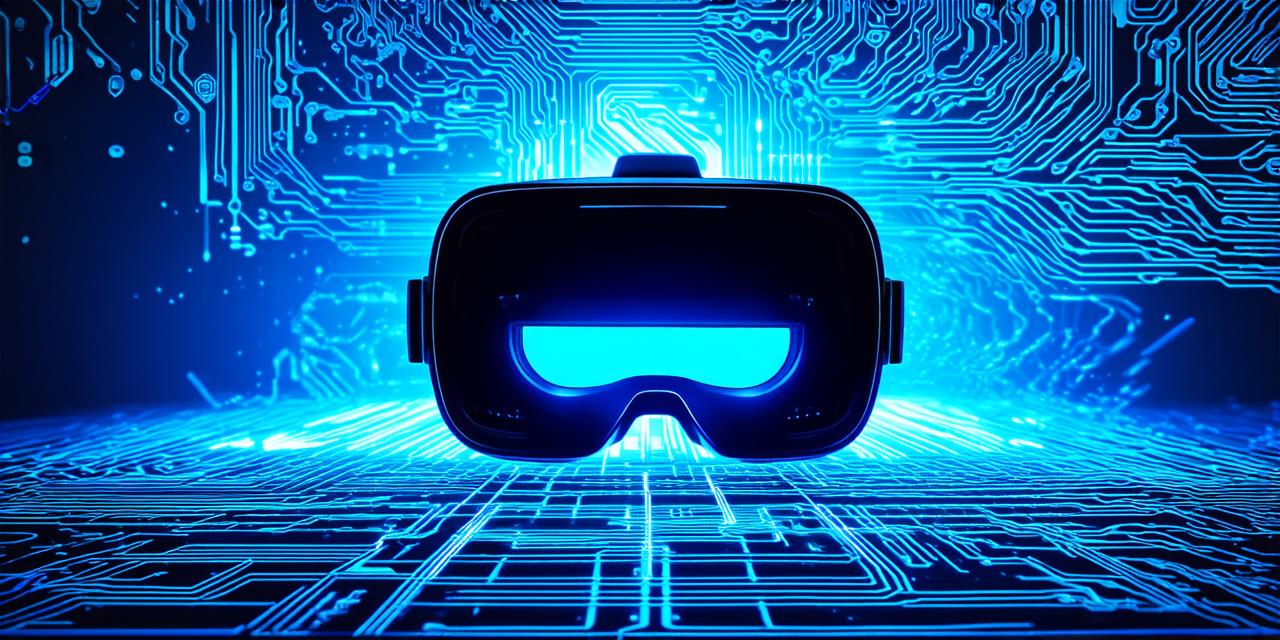<!DOCTYPE html>
Early beginnings
The concept of virtual reality dates back to the 1960s when researchers first started experimenting with immersive environments. One of the earliest examples of VR was the Sword of Damocles, a device that used a projector and a screen to create a 3D image in front of the user. This device was designed by Ivan Sutherland in 1968, and it marked the beginning of the virtual reality era.
2. The rise of VR gaming
In the early 2000s, virtual reality technology began to gain traction in the gaming industry. With the release of devices like the Oculus Rift and HTC Vive, gamers could immerse themselves in fully interactive, 3D environments. These devices allowed users to explore new worlds, fight monsters, and even fly through the air. The rise of VR gaming paved the way for further advancements in virtual reality technology.
3. Virtual reality in other industries
Virtual reality technology has also found applications beyond gaming. In recent years, we’ve seen virtual reality used in fields like medicine, education, and architecture. For example, surgeons can use VR simulations to practice complex procedures, while students can learn about historical events by virtually walking through them. Architects can also use VR to design and visualize building projects, which saves time and resources.
4. Advancements in technology
One of the key factors driving the evolution of virtual reality technology is advancements in hardware and software. As technology has improved, VR devices have become smaller, more affordable, and more powerful. This has allowed for more immersive experiences, with higher resolutions and better tracking. Software advancements have also made it easier to create and distribute virtual content, which has led to a wider range of applications for the technology.
5. Challenges and limitations
While virtual reality technology has come a long way, there are still challenges and limitations that need to be addressed. One of the biggest challenges is motion sickness, which can occur when users move quickly in a virtual environment. This can be especially problematic for people with certain medical conditions or those who are prone to motion sickness. There are also limitations to the amount of data that VR devices can process, which can lead to lag and stuttering.
6. Future outlook
Despite these challenges, virtual reality technology is expected to continue growing and evolving in the coming years. With advancements in hardware and software, we can expect to see even more immersive experiences and wider applications for VR. We may also see the rise of new forms of virtual reality, such as haptic feedback, which allows users to feel sensations in a virtual environment.
FAQs:
1. What is virtual reality technology?
Virtual reality (VR) technology allows users to experience digital content in a fully immersive environment. Users wear a VR headset and can move around in a virtual world, interacting with objects and other users.
2. How has virtual reality technology evolved over time?
Virtual reality technology has evolved significantly since its early beginnings, with advancements in hardware and software leading to more powerful and immersive devices. The rise of VR gaming in the early 2000s paved the way for further development and applications beyond gaming.
3. What are some challenges and limitations of virtual reality technology?
Despite advancements in hardware and software, there are still challenges and limitations to virtual reality technology. Motion sickness, data processing limitations, and high costs are some of the most significant challenges.
4. How is virtual reality technology being used in other industries beyond gaming?
Virtual reality technology has found applications in fields like medicine, education, and architecture. Surgeons can use VR simulations to practice complex procedures, students can learn about historical events by virtually walking through them, and architects can design and visualize building projects using VR.
5. What is the future outlook for virtual reality technology?
Virtual reality technology is expected to continue growing and evolving in the coming years, with advancements in hardware and software leading to even more immersive experiences and wider applications. New forms of virtual reality, such as haptic feedback, may also emerge.
